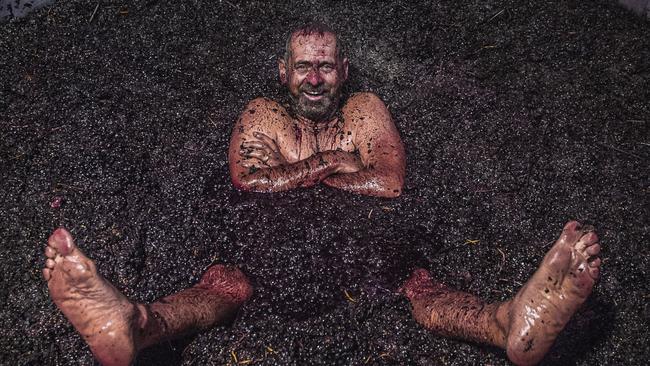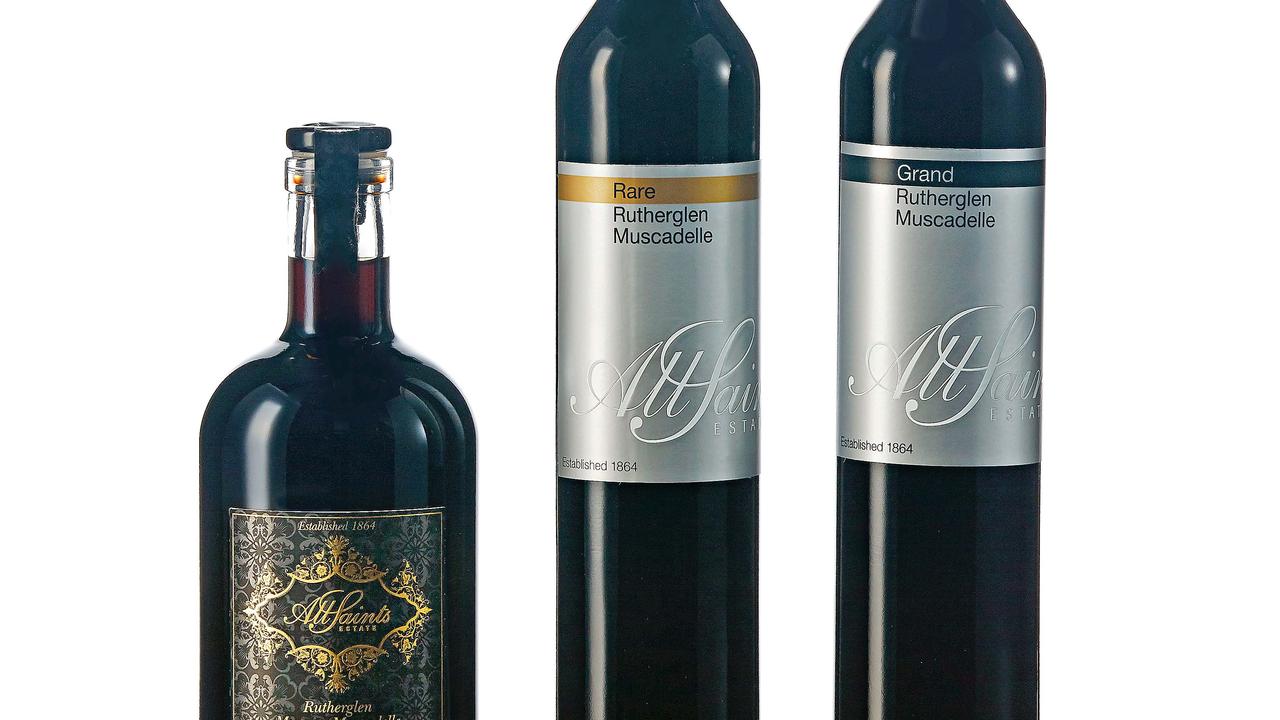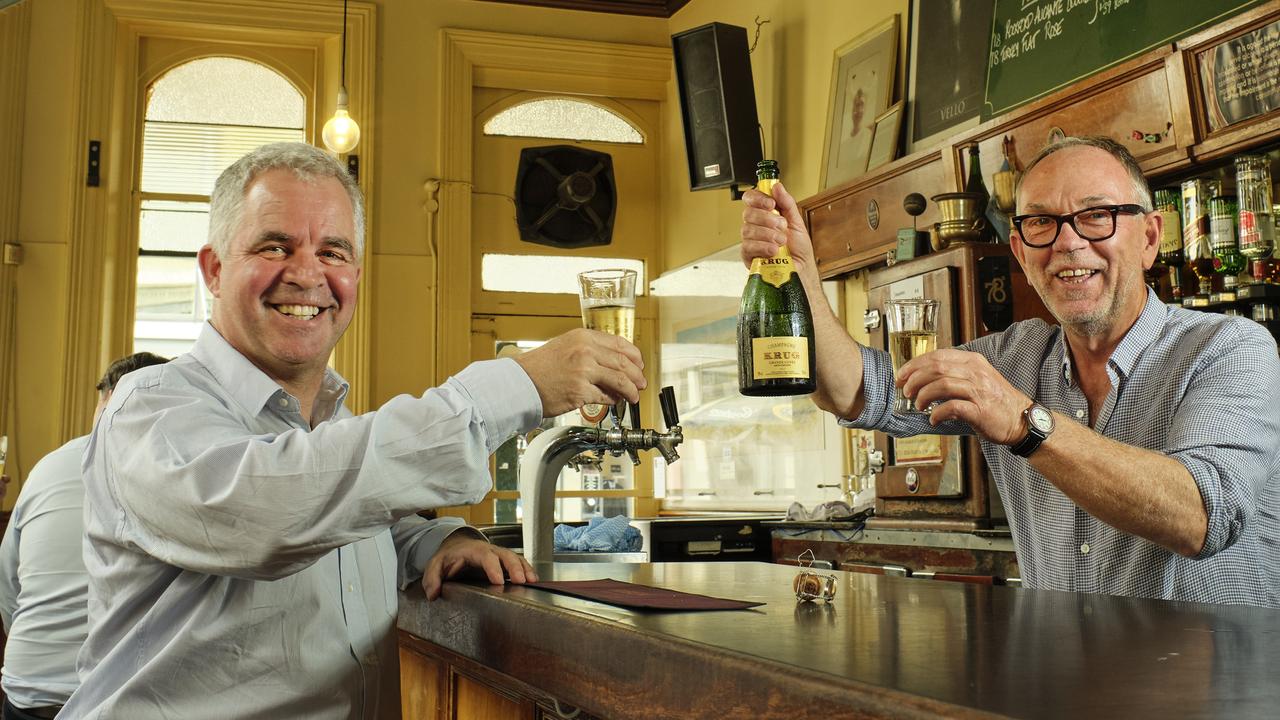McLaren Vale winemaker Steve Pannell: the red baron
Steve Pannell’s story mirrors the broader evolution of Australian wine over the past half century.

I first met Steve Pannell 21 years ago — almost to the day — at the Tintara winery in McLaren Vale, south of Adelaide. It was the 29-year-old’s first vintage as red winemaker for Hardys, one of the country’s oldest and largest wine companies. The 1995 harvest was just drawing to a close; on the tasting bench in the winery were glasses of deep purple, raw young shiraz.
Pannell was like a kid in a lolly shop that day: you sensed he couldn’t quite believe he’d been put in charge of operations at the century-old winery, that he was allowed to play with the grapes from some of the region’s top vineyards.
He was also full of ideas and opinions that, in retrospect, were ahead of their time.
“I don’t follow a recipe,” he told me at Tintara. “I don’t make blanket additions of yeast or acid to the wine. I don’t add anything if I don’t have to.”
This unconventional approach obviously worked because the Eileen Hardy shiraz he made that vintage went on the following year to win the Jimmy Watson Trophy, Australia’s best-known wine award, catapulting young Pannell into the position of celebrity wunderkind winemaker — with all the attention that entails.
“Sometimes I feel like a boxer going into a bar,” he told me not long after that big win in 1996. “Everybody wants to fight you, when all I want to do is get back to making wine.”
When I caught up with him last week, not long after the 2016 harvest had drawn to a close, Pannell handed me a bottle of shiraz he planned to release later this year. It comes from the same vineyard as the shiraz I tasted at Tintara all those years ago — a vineyard he and his wife, Fiona Lindquist, now own. Full circle.
In many ways, Pannell’s story mirrors the broader evolution of Australian wine during the past half-century. He grew up surrounded by wine: his parents established the Moss Wood vineyard in Margaret River in the late 1960s, part of a group of wine-mad doctors pioneering grape-growing in the region at the time.
He remembers spending most of his time at the beach: when important wine people from the east such as Len Evans and Brian Croser came to visit, 12-year-old Steve would take them crabbing.
Pannell worked for Hardys from the mid-90s to the mid-2000s, an era of export boom and corporate expansion followed by massive oversupply and the beginnings of a bust.
When he left the big company in 2004 and established his own label, SC Pannell, it was a “virtual” winery: like many of his contemporaries at the time, he bought in grapes and made his wines in other people’s cellars.
In the late 2000s, along with others in the industry, he started making and selling more and more wines made from non-mainstream grape varieties in non-mainstream styles: old undervalued workhorse grapes such as grenache; new Mediterranean grapes such as nebbiolo and tempranillo and touriga; blends of aromatic white grapes, and pale, dry rose.
Importantly, he began to win trophies for these groundbreaking wines, which encouraged other producers to play with new grapes and styles.
In 2014 he and Lindquist bought the old Tapestry vineyard in McLaren Vale to open their own cellar door, an acknowledgment that if you want to be in the wine game for a long time, you need to have a home, a connection to place.
Later that year, when he won the Jimmy Watson Trophy for a second time, it was with a spicy, medium-bodied, $25, everyday-drinking shiraz from the Adelaide Hills — a very different style from the full-bodied, oaky, high-priced and “collectable” Eileen Hardy shiraz that won the same trophy in 1996.
His next project is to import and plant the northern Greek red variety xinomavro, a grape perfectly suited to McLaren Vale’s ever-warmer growing seasons and ever-earlier harvests.
It sounds like a dream run: the critical acclaim, the successful brand, the brilliant career. But just as glossy stories in the wine media about exciting new wines and colourful characters obscure the hard realities of the industry — such as the fact the vast majority of Australia’s 3000 wine businesses are not profitable and are managing to stay afloat only thanks to the wine equalisation tax rebate — there’s a lot of stuff going on behind the scenes for Pannell, necessary “day jobs” that bring in the funds for his own brand.
Pannell consults to several companies across Australia. As well as making his own wines he also works at Tinlins, a McLaren Vale bulk producer, making huge quantities of wine that’s sold to other companies.
No wonder that when we sat down for a chat last week he was looking a little vintage-weary — and was hanging out for a beer: “Anything except bloody red wine,” he said. “I never want to see another vat of fermenting shiraz.”
He’s joking, of course: we spent most of our conversation talking about (and drinking) red wine. As one of his former employers, winemaker Tim Knappstein, told me after Pannell’s first Watson win: “Steve has a real feeling for red wine; he lives and breathes red wine.”
Two decades later, the passion is still there; the only thing that has changed — and it’s a profound change — is the style of red wine that he lives and breathes.
As well as the serious single vineyard shiraz I mentioned earlier, Pannell also brought a bottle of the latest vintage of his tempranillo touriga blend, a supple, slurpy medium-bodied red.
“These two wines embody where I’m at,” he said. “I often ask myself: why do I keep doing this job? Why am I fascinated by wine? What holds my interest? What’s unique about wine? And the answer is that it speaks of place, of where it was grown, more clearly than anything else we eat or drink.”
If you take that as your starting point, he argues, it informs everything else you do: you choose grape varieties that are going to best express a unique flavour of where they were grown; and if anything gets in the way of the best expression of place — like the toasty flavours of new, small barrels once so beloved of Australian red winemakers — then you get rid of it.
Echoing his younger self, Pannell told me he still avoids following a recipe for his own wines. But while he won’t add anything to a wine if it doesn’t need it, he’s wary of going all the way — as many in the currently popular natural wine scene do — and zealously not adding anything at all.
“One thing that upsets me about the dogma of natural winemakers,” he said, “is the implication that what the rest of us are doing is not correct, and we’re poisoning everyone with a little bit of sulphur or a little bit of yeast, and that’s just not true.”
For Pannell, winemaking is about “looking around you, observing, and responding to whatever the season and nature throw at you. It’s not like baking a cake or making a model tank.”
One of the most important things grape-treaders such as he can do is think of themselves as growing wine rather than making it — going back to the fundamentals and making sure they’re growing the right grape varieties in the right places.
“I remember when I first started dabbling around with grapes like tempranillo and grenache back in the mid-90s everybody was like, ‘What is this shit? You’re a complete loop,’ ” he says.
“And now look: everybody wants to drink wine made from these varieties. Everybody wants to drink young unoaked red wines. How quickly it’s all changed: I know it’s been 20 years, but that’s not very much time at all in the life of a vine.”
Steve Pannell is appearing at several events at Tasting Australia in Adelaide next week.
On Tuesday he joins a group of leading South Australian winemakers at Wine Day Out, a program of TED-style talks and discussions in the Town Square, for a panel session (moderated by your correspondent) called Beyond the Future Makers: winedayout.com.
He’s also taking part in two major wine dinners during the Tasting Australia festival: the Single Sites Dinner at the Adelaide Convention Centre on Thursday and the Origins Dinner — at a venue yet to be revealed — on Saturday. More: tastingaustralia.com.au.


